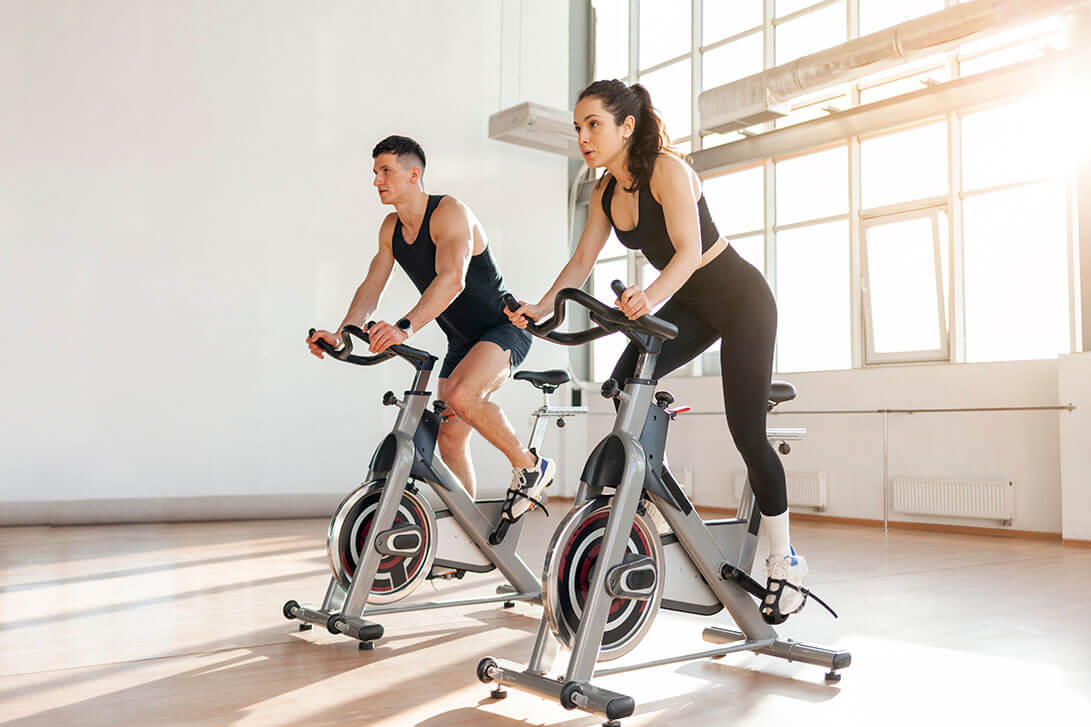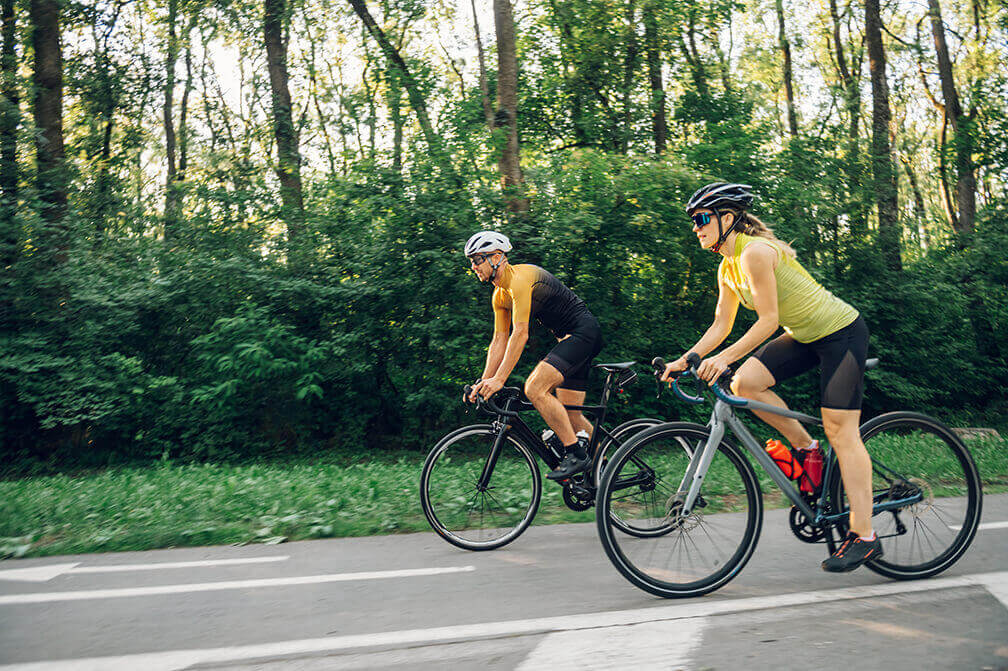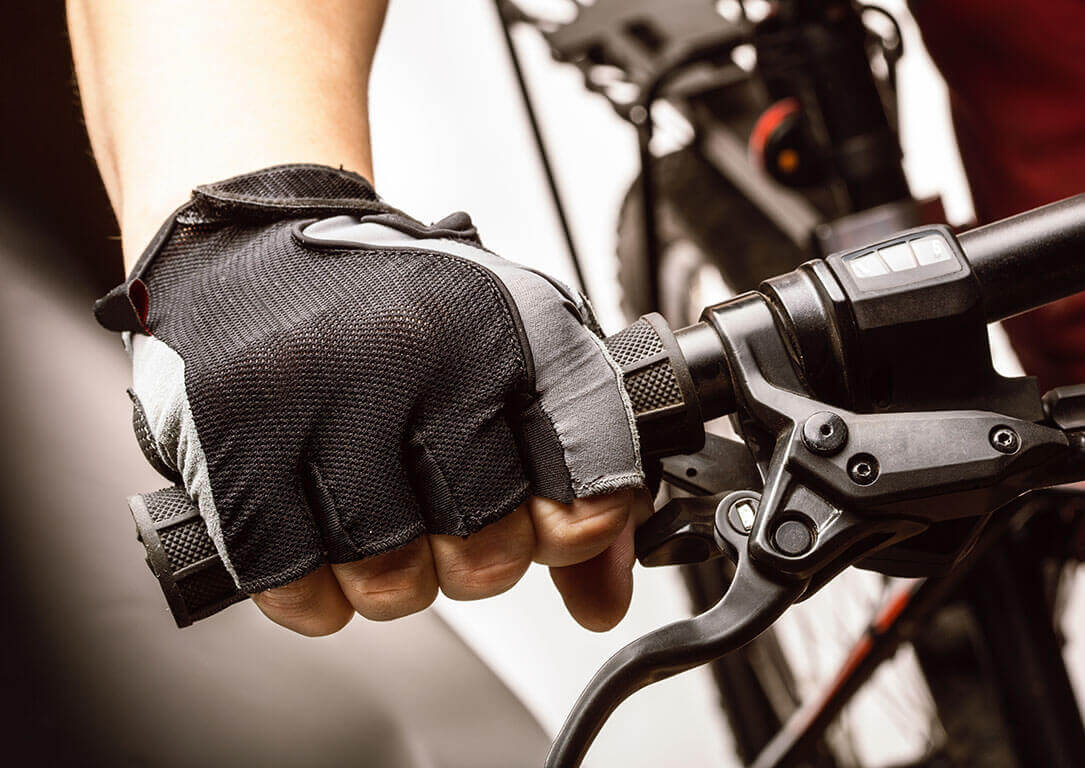Have you ever wondered how professional cyclists manage to maintain their speed and efficiency throughout a race? The secret lies in mastering cycling cadence. This seemingly simple concept plays a crucial role in optimizing performance and reducing fatigue. In this blog post, we will delve into the world of high and low cadence cycling, unveiling the pros and cons of each and providing you with essential tips to enhance your own cycling experience. But first, let’s answer the question: what is cadence in cycling?
Understanding and optimizing cadence is not just for elite cyclists. Whether you’re a beginner looking to improve or an experienced rider seeking to fine-tune your technique, finding your ideal cycling cadence can unlock new levels of performance and efficiency. Are you ready to revolutionize your ride? Let’s dive in!
Key Takeaways
- Unlock your cycling potential by understanding and finding the optimal cadence for improved performance, power output and reduced muscle strain.
- Maximize your cycling performance with an understanding of muscle fiber types, cardiovascular fitness & high/low cadence pros & cons.
- Track and measure your cadence to optimize riding experience in different situations including indoor/outdoor rides & triathlons!
Understanding Cycling Cadence

Cycling cadence refers to the rate at which a rider pedals, measured in revolutions per minute (RPM). It’s essentially the speed at which you turn the pedals to maintain a consistent pace. Elite cyclists often have a preferred pedaling cadence, which helps them optimize power output while reducing strain on their muscles.
Discovering your optimal cycling cadence could significantly enhance your performance. Riding at a higher cadence increases the load on your cardiovascular system. Lower cadence, on the other hand, puts more emphasis on your muscles. In essence, a good balance between the two can lead to better cycling efficiency and less fatigue during your rides.
The Science Behind Optimal Cadence

Optimal cadence, which is influenced by factors such as muscle fiber types, cardiovascular fitness, and experience level, can be closely related to finding your ideal cycling cadence. Research suggests that a cadence of around 80 RPM is generally efficient; however, individual preferences may vary, and discovering your own preferred cadence is key to maximizing your cycling performance.
For instance, novices generally pedal at slower speeds, whereas seasoned cyclists and professionals are able to sustain higher speeds over longer periods. Understanding the relationship between these factors and your optimal cadence can help you tailor your training to improve your cycling efficiency, power output, and overall performance.
Muscle Fiber Types and Cardiovascular Fitness
The composition of your muscle fibers and your level of cardiovascular fitness are critical factors in determining your optimal cycling cadence. For instance, beginners may benefit from pedaling at a slower rate, while experienced cyclists can push for a faster cadence.
This is because different muscle fibers (slow-twitch and fast-twitch) have distinct characteristics that influence energy expenditure and the energetically optimal cadence during pedaling. Higher percentages of fast-twitch (type II) muscle fibers have been associated with higher optimal pedaling cadence. In contrast, low-cadence cycling exercises can induce greater glycogen depletion of type II muscle fibers, leading to improved performance, while engaging slow twitch muscles.
Recognizing your muscle fiber composition and cardiovascular strength allows you to fine-tune your cadence for improved efficiency and less fatigue.
Beginner vs. Experienced Cyclists
As previously mentioned, beginner and experienced cyclists tend to have different cadence preferences. Beginners usually have lower cadences, averaging around 60 RPM, which puts more strain on the muscles. On the other hand, experienced cyclists typically maintain a higher cadence, ranging from 85-90 RPM, which shifts the load more towards the cardiovascular system.
This variation in cadence preference can significantly influence the enhancement of overall cycling performance. Increasing your cadence as you gain experience enables you to push your limits and make substantial strides in your cycling endeavor.
High Cadence vs. Low Cadence: Pros and Cons
High and low cadences each possess unique advantages and disadvantages. High cadence cycling can improve cardiovascular efficiency and reduce muscle fatigue, making it beneficial for endurance events. However, it may be less efficient for amateur riders who are not used to maintaining a high pedal speed for extended periods.
Low cadence cycling, on the other hand, focuses more on muscle strength. While it may be more efficient for shorter events, it can lead to increased muscle strain and faster glycogen depletion due to its slow cadence.
Comprehending the benefits and drawbacks of high and low cadence cycling enables you to customize your training to meet your specific needs and objectives, ultimately enhancing your performance.
High Cadence Benefits and Drawbacks
High cadence cycling has numerous advantages, such as:
- Increased endurance
- Improved cardiovascular efficiency
- Reduced muscle co-activation, allowing you to maximize your performance and achieve a more efficient pedal stroke
- Help in maintaining a consistent speed during training sessions, making it easier to stay within your intended training zone.
Nevertheless, high cadence cycling might not be for everyone, especially for beginners. Maintaining a high pedal speed for extended periods can be challenging and may result in reduced efficiency and increased fatigue. It’s essential to find the right balance between high and low cadence that works best for you and your specific riding situation.
Low Cadence Benefits and Drawbacks
Low cadence cycling is an excellent way to build muscular endurance and cycling-specific power. By maintaining a cadence of 50-60 RPM against high resistance, you can effectively target your muscles, leading to increased strength and endurance. This type of training can be particularly beneficial for riders with a more muscular physique and those looking to develop an efficient pedal stroke.
Despite its advantages, low cadence cycling also comes with some disadvantages. Maintaining a low cadence for extended periods can be challenging and may lead to muscle fatigue. As with high cadence cycling, it’s crucial to find the right balance between high and low cadence to optimize your performance and prevent fatigue.
Measuring and Tracking Your Cadence
Monitoring your cadence can serve as a beneficial instrument in enhancing your performance and avoiding fatigue. Electronic devices, such as cadence sensors, power meters, or smart bikes, can measure cadence and provide you with real-time RPM data. These devices can help you fine-tune your cadence during training sessions and monitor your progress over time.
Using a Bluetooth-enabled cadence sensor with the Peloton App on Apple® iOS offers an excellent tracking feature. It allows you to:
- Track your real-time cadence
- Stay in sync with the instructor’s cues during cycling workouts
- Record and monitor your cadence
- Make the required modifications to your riding style and training regimen
- Enhance your overall cycling performance
Cadence Training Drills and Techniques
Incorporating cadence training drills and techniques into your cycling routine can help improve pedaling fluidity, coordination, and strength endurance. These drills are designed to target specific aspects of your riding style, leading to better overall cycling performance.
Practicing varied cadence drills allows you to hone your technique and stimulates specific adaptations, like enhanced neuromuscular efficiency and strength augmentation. Examples of cadence training drills include:
- Endurance cycling
- Single-leg focus
- Isolated leg training
- Kick and pull exercises
Each of these drills targets a different aspect of your cycling performance, allowing you to develop a well-rounded and efficient riding style.
Integrating diverse drills into your training regimen enables you to perfect your cadence and fully unleash your potential on the bike.
Pedaling Fluidity and Coordination Drills
Pedaling fluidity and coordination drills are designed to improve the smoothness and efficiency of your pedaling technique. These drills typically involve high RPM sessions, allowing you to focus on your pedaling mechanics and rehearse movement patterns that lead to a more efficient pedal stroke.
Endurance cycling is one such drill that can help you improve your natural, self-selected cadence. By increasing your cadence by 3-5 RPM for 5 minutes during your workout, you can effectively train your neuromuscular system to pedal more smoothly with the right crank arm technique.
Another drill, the single-leg focus, involves concentrating on one leg at a time while cycling, paying close attention to the bottom and top of the pedal stroke. This drill can be performed on a trainer and helps improve power application throughout the entire pedal stroke.
Strength Endurance Sessions
Strength endurance sessions focus on low cadence, high power output exercises that aim to build muscle strength and endurance. These sessions typically involve maintaining a cadence of 50 to 60 RPM against high resistance. By pushing yourself during these workouts, you can effectively target your muscles and improve your overall cycling power.
The ideal rest time between blocks in a strength endurance session for maximum results is between 10 and 15 minutes. This allows your muscles to recover adequately before the next block, ensuring that you can maintain the high power output required for these sessions.
Incorporating strength and endurance sessions into your training plan can help you develop the muscular power and endurance needed for optimal cycling performance.
Adapting Cadence for Different Riding Situations
Modifying your cadence to suit different riding conditions is vital for maximizing performance and averting fatigue. Factors such as indoor vs. outdoor cycling, triathlon events, and varying terrain and effort levels all require adjustments to your cadence to maximize your riding experience.
Comprehending how these elements influence your optimal cadence enables you to customize your training regimen to accommodate your unique needs and objectives. For example, energy conservation is an essential consideration when adjusting your ideal cadence for ultra-endurance rides. By keeping your cadence within the range of 70-90 RPM, you can effectively conserve energy and maintain a steady pace during these long events.
On the other hand, performance and economy are both important for shorter, more intense rides, which may require a higher cadence to generate more power and achieve better efficiency.
Indoor vs. Outdoor Cycling

Indoor cycling sessions offer a fantastic opportunity to hone your cadence without the distractions of outdoor terrain and conditions. The controlled environment of an indoor cycling workout allows you to focus on your cadence and technique, making it easier to track your progress and make necessary adjustments to your riding style.
On the other hand, outdoor cycling may require you to adapt your cadence based on the terrain and effort level. For example, climbing steep hills or navigating technical descents will likely necessitate adjustments to your cadence to maintain an efficient and effective pedal stroke.
Engaging in both indoor and outdoor cycling enables you to acquire the skills required to modify your cadence according to different riding conditions and enhance your performance.
Cadence Considerations for Triathletes
Triathletes face unique challenges when it comes to optimizing cadence. A combination of low and high cadence cycling can be beneficial, with low cadence improving efficiency during the bike leg of the race and high cadence aiding in a faster initial pace for the run.
Low cadence cycling can help triathletes become more efficient on the bike leg, enabling them to sustain a steady pace for a longer duration. High cadence cycling, on the other hand, can help triathletes gain more power in a shorter time, allowing them to reach a faster initial pace for the run.
Integrating both low and high cadence cycling into their training regimen allows triathletes to boost their performance during races and enhance their overall outcomes.
Summary
Throughout this blog post, we have explored the importance of cycling cadence in optimizing performance and efficiency. We have discussed the pros and cons of high and low cadence cycling, as well as the factors that influence optimal cadence, such as muscle fiber types, cardiovascular fitness, and experience level. Additionally, we have provided insights into measuring and tracking your cadence, cadence training drills and techniques, and adapting cadence for different riding situations.
By understanding and applying the knowledge gained in this blog post, you can revolutionize your cycling experience and unlock your full potential on the bike. Whether you’re a beginner looking to improve or an experienced rider seeking to fine-tune your technique, mastering your cadence will undoubtedly elevate your performance and lead to greater success on the road.
Frequently Asked Questions
What is normal cycling cadence?
For most cyclists, a cadence of 80-90 rpm is the optimal range for road cycling. This range helps to reduce fatigue, increase cycling economy, and lower metabolic demands, while avoiding pressure on your knees and lower back.
Beginner cyclists may pedal more slowly between 60-85 rpm, while racers and experienced hobbyists usually average 75-95 rpm and pros over 100 rpm during attacks or more than 110 rpm during sprints.
How do I know my bike cadence?
Measuring your cadence is easy: count how many times your legs go up and down in a minute, or use an electronic device (cadence sensor) that attaches to the left-side chainstay.
For more accuracy, count for 10 seconds and multiply by 6.
That’s it – no need to complicate things!
Is cadence the same as speed?
No, cadence is not the same as speed. Cadence is a measure of how often pedals are completed per minute, while speed measures the distance traveled in a specific timeframe.
Therefore, cadence and speed are two distinct measurements in cycling.
What cadence should I cycle at to lose weight?
Target a cadence of around 60-80 RPM in a low gear to burn the maximum amount of fat while still keeping your heart rate elevated.
This will allow you to stay active and burn calories without tiring out quickly.
What is the ideal cadence for beginner cyclists?
For beginner cyclists, pedaling at a slower rate is key to build your cycling stamina and strength.
Experienced cyclists can then push for a faster cadence.




Leave a comment
This site is protected by hCaptcha and the hCaptcha Privacy Policy and Terms of Service apply.